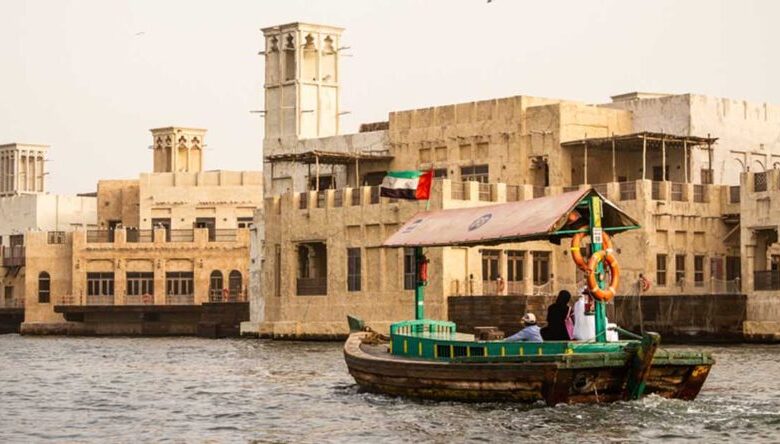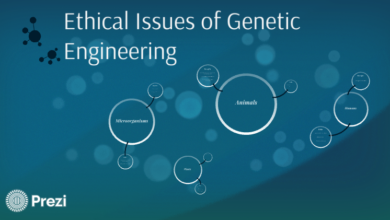Dubai’s Unforgettable Past: Exploring the Rich History of Dubai

Dubai, the dazzling city of towering skyscrapers, luxurious resorts, and extravagant shopping malls, has undoubtedly earned its place as one of the most iconic modern destinations in the world. But amidst the glitz and glamour that Dubai showcases today, it is easy to forget that this city also has a deep-rooted and captivating history that spans centuries. In this blog post, we will embark on a journey through time and delve into the fascinating past of Dubai, unearthing stories and secrets that weave together the tapestry of this remarkable city. Picture yourself standing on the shores of the Dubai Creek, with the warm breeze brushing against your skin, as you gaze upon the bustling waterway that was once the lifeblood of this vibrant city. Centuries ago, long before the gleaming towers and lavish resorts emerged, Dubai was a humble fishing and pearl diving village, its prosperity tied to the sea that surrounds it. As the sun sets over the horizon, casting a golden glow on the ancient Arabian architecture that lines the creek’s banks, you can almost hear echoes of the past whispering tales of merchants and sailors who once brought exotic goods and cultures from faraway lands. Dubai’s history is a mesmerizing blend of Bedouin traditions, maritime trade, and visionary leadership that transformed a small settlement into a global metropolis. From its early days as a trading hub for pearls and textiles to its strategic location along important trade routes, Dubai has always been a crossroads of cultures and ideas. As we peel back the layers of time, we will uncover stories of resilience, innovation, and ambition, showcasing how this city emerged from the desert sands to cement its place as a beacon of modernity in the Middle East. Join us on this captivating journey as we explore Dubai’s unforgettable past and unveil the historical treasures that have shaped its remarkable present. So, fasten your seatbelts, dear readers, and prepare to be transported back in time to a Dubai that is often overshadowed by its modern-day splendor. Let’s dive deep into the rich history of Dubai and discover the captivating tales that lie beneath the glittering facade.
From Fishing Village to Global Metropolis: Dubai’s Remarkable Transformation
Dubai, once a humble fishing and pearl diving village, has undergone a remarkable transformation over the years. Today, it stands as a global metropolis, boasting towering skyscrapers, world-class infrastructure, and a thriving economy. But how did this small settlement on the shores of the Arabian Gulf evolve into the bustling city we know today?
The story begins centuries ago when Dubai’s prosperity was intricately tied to its relationship with the sea. Fishing and pearl diving were the primary sources of income for the early inhabitants of Dubai. The warm waters of the Arabian Gulf teemed with an abundance of marine life, providing sustenance and livelihood for generations.
As time went on, Dubai’s reputation as a center for pearl diving grew. Pearl divers from around the region flocked to Dubai in search of valuable pearls that adorned jewelry and were highly sought after in international markets. This trade brought wealth and prosperity to the city, laying the foundation for its future growth.
However, it was not just pearls that put Dubai on the map. The city’s strategic location along important trade routes made it a vital hub for maritime trade. Merchants from across Asia, Africa, and Europe converged in Dubai to exchange goods and ideas. This crossroads of cultures enriched Dubai’s society and contributed to its vibrant tapestry.
The Pearl Divers: Uncovering Dubai’s Early Economy
The early economy of Dubai revolved around pearl diving, which played a crucial role in shaping its history. Pearl divers would embark on perilous journeys into the depths of the Arabian Gulf in search of these precious gems.
Pearl diving was not an easy task; it required immense skill and courage. Divers would plunge into the depths without any modern diving equipment, relying solely on their breath-holding abilities. They would spend hours underwater, scouring the seabed for oysters that held the potential for valuable pearls.
Once the pearls were harvested, they would be carefully sorted and graded. Dubai became known for its high-quality pearls, attracting merchants from around the world. The pearl trade brought immense wealth to the city and laid the foundation for its future prosperity.
However, Dubai’s reliance on pearl diving came with its own set of challenges. The industry was vulnerable to fluctuations in pearl prices and environmental factors that affected oyster populations. As a result, Dubai’s economy faced periods of boom and bust throughout its history.
The Crossroads of Cultures: Dubai’s Role in Maritime Trade
Dubai’s strategic location along important trade routes made it a melting pot of cultures and ideas. Merchants from different parts of the world converged in Dubai to exchange goods and forge new business relationships.
The maritime trade routes passing through Dubai connected Asia, Africa, and Europe, making it an ideal trading hub. Goods such as spices, textiles, precious metals, and ceramics flowed through the city’s bustling markets.
Dubai’s position as a crossroads of cultures allowed for the exchange of not only goods but also knowledge and ideas. The city became a melting pot where diverse cultures coexisted harmoniously, enriching each other’s traditions and customs.
Dubai’s Strategic Location: A Gateway to the World
One of Dubai’s greatest assets is its strategic location. Situated at the crossroads between East and West, it has long served as a gateway to various parts of the world.
The Arabian Gulf provided easy access to India, Persia (modern-day Iran), Africa, and beyond. This proximity to key trading partners gave Dubai a competitive advantage in the maritime trade industry.
Additionally, Dubai’s location made it an ideal stopover for ships traveling between Europe and Asia. Merchants would take advantage of Dubai’s strategic position to restock their supplies, repair their vessels, and conduct business transactions.
Over time, Dubai’s strategic location played a crucial role in its transformation into a global metropolis. The city capitalized on its geographic advantages to attract international investments and establish itself as a major player in the global economy.
Bedouin Traditions: The Cultural Roots of Dubai
Before the rise of modernity, Dubai was deeply rooted in Bedouin traditions. The Bedouins were nomadic desert dwellers who inhabited the Arabian Peninsula for centuries.
The harsh desert environment shaped the way of life for the Bedouins. They developed survival skills and a deep connection with nature that allowed them to thrive in challenging conditions.
Bedouin traditions such as hospitality, loyalty, and respect for nature continue to influence Emirati culture today. These values are deeply ingrained in the fabric of Dubai society and contribute to its unique identity.
The Rise of a Visionary Leader: Sheikh Rashid and the Modernization of Dubai
Dubai’s transformation from a small fishing village to a global metropolis would not have been possible without visionary leadership. Sheikh Rashid bin Saeed Al Maktoum played a pivotal role in shaping modern-day Dubai.
Sheikh Rashid became the ruler of Dubai in 1958 and embarked on an ambitious mission to modernize the city. He recognized the potential for economic growth beyond pearl diving and set out to diversify Dubai’s economy.
Under Sheikh Rashid’s leadership, infrastructure projects were initiated, including the construction of ports, airports, and roads. These developments laid the foundation for Dubai’s future as a global trade and tourism hub.
Sheikh Rashid’s forward-thinking approach and relentless pursuit of progress propelled Dubai into the modern era. His legacy continues to inspire future generations and is a testament to Dubai’s ability to adapt and thrive in an ever-changing world.
The Architecture of the Past: Exploring Dubai’s Ancient Arabian Structures
Dubai’s architectural heritage is a testament to its rich history. The city is home to ancient Arabian structures that have withstood the test of time.
One such example is Al Fahidi Fort, which dates back to the late 18th century. This iconic structure served as a defensive fortification and later became the Dubai Museum, showcasing artifacts that offer a glimpse into the city’s past.
Traditional wind towers, known as “barjeel,” are another architectural feature unique to Dubai. These towers were designed to capture cool breezes and provide natural ventilation in the hot desert climate.
Exploring these ancient structures allows us to connect with Dubai’s past and appreciate the ingenuity of its ancestors. It is a reminder that amidst all the modernity, traces of history can still be found throughout the city.
Unveiling the Treasures: Historical Sites and Museums in Dubai
Dubai is home to a wealth of historical sites and museums that offer insights into its captivating past. These cultural treasures provide visitors with an opportunity to delve deeper into Dubai’s history.
The Dubai Museum, located within Al Fahidi Fort, showcases exhibits that depict life in old Dubai. Visitors can explore traditional Emirati houses, view artifacts from archaeological sites, and learn about pearl diving traditions.
The Sheikh Mohammed Centre for Cultural Understanding is another must-visit destination. It offers immersive experiences that allow visitors to learn about Emirati culture, traditions, and customs firsthand.
By visiting these historical sites and museums, one can gain a deeper appreciation for Dubai’s rich heritage and the stories that have shaped its present-day identity.
The Desert Nomads: How Dubai Adapted to its Harsh Environment
Dubai’s transformation from a desert landscape to a modern metropolis is a testament to human resilience and adaptability. The early inhabitants of Dubai, known as Bedouins, were skilled in navigating the harsh desert environment.
Water scarcity was one of the biggest challenges faced by the Bedouins. They developed innovative techniques such as falaj systems (an ancient irrigation method) and underground wells to ensure a sustainable water supply.
As Dubai grew, modern infrastructure was put in place to address water scarcity. Desalination plants were built to convert seawater into freshwater, ensuring a reliable source of water for the city’s residents and businesses.
Dubai’s ability to adapt to its harsh environment is a testament to its resilience and determination. It serves as an inspiration for cities around the world facing similar challenges.
Conclusion: Dubai’s Rich History Continues to Shape its Future
Dubai’s rich history is an integral part of its identity. From its humble beginnings as a fishing village and pearl diving center to its current status as a global metropolis, every chapter of Dubai’s past has contributed to shaping its present-day glory.
The city’s strategic location, crossroads of cultures, visionary leadership, and ability to adapt have all played crucial roles in Dubai’s transformation. Its architectural heritage and historical sites offer glimpses into the past while showcasing the city’s commitment to preserving its cultural roots.
As Dubai continues to evolve and embrace the future, it remains deeply connected to its history. The stories of Dubai’s past serve as a reminder of the city’s resilience, innovation, and ambition. They inspire us to appreciate the journey that has brought Dubai to where it stands today.
So, next time you find yourself wandering through the gleaming streets of Dubai or marveling at its iconic skyline, take a moment to reflect on the captivating tales that lie beneath the glittering facade. Dubai’s unforgettable past is etched into every corner of this remarkable city, shaping its present and guiding its future.






